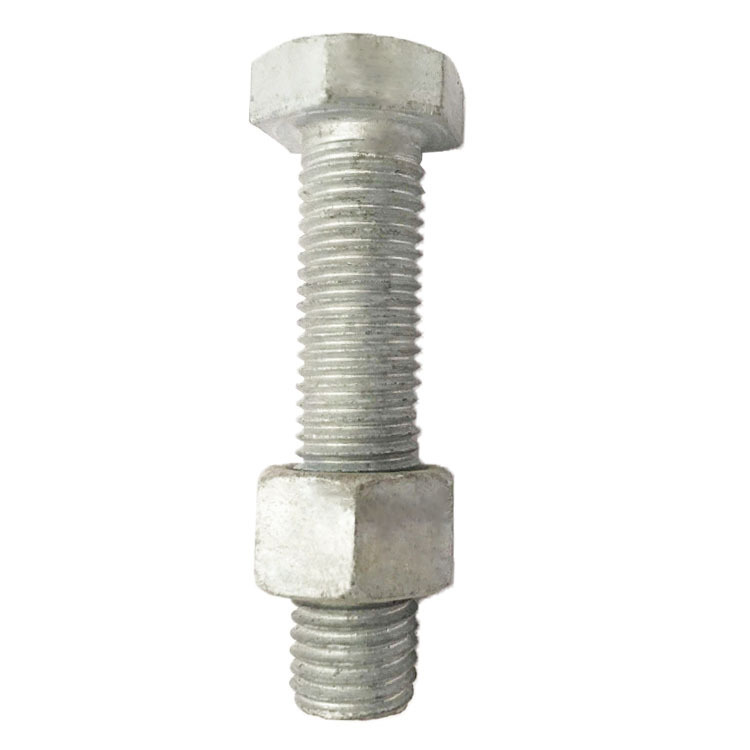

Understanding the Advantages of Double End Threaded Stud Bolts in Engineering Applications
Sep . 29, 2024 01:30 Back to list
Understanding the Advantages of Double End Threaded Stud Bolts in Engineering Applications
Double End Threaded Stud Bolts An Overview
Double end threaded stud bolts are essential fasteners in a variety of industrial applications. Their unique design, featuring threads on both ends and a smooth shank in the middle, makes them particularly versatile and useful in situations where a strong and secure connection is required. These double-ended bolts can be found across numerous sectors, including construction, automotive, aerospace, and manufacturing.
What Are Double End Threaded Stud Bolts?
Double end threaded stud bolts are cylindrical rods that are threaded on both ends, allowing them to be securely embedded into materials from both sides. The center portion typically remains unthreaded, providing a smooth surface that can help in various tasks, including alignment and stability. The lengths and diameters of these bolts can vary significantly, allowing for customization based on specific project requirements.
Applications
The applications of double end threaded stud bolts span a wide range of industries
1. Construction In the construction sector, these fasteners are often used to anchor structural components together. They can secure beams, columns, and other load-bearing elements, ensuring the integrity of the structure as a whole.
2. Automotive In automotive manufacturing and repair, double end threaded stud bolts play a crucial role in connecting engine components, suspensions, and other chassis parts. Their reliability under harsh conditions makes them ideal for this demanding industry.
3. Aerospace Double end threaded stud bolts are vital in aerospace applications, where precision and strength are paramount. They are often used in assembling different aircraft components, contributing to overall safety and performance.
double end threaded stud bolts

4. Manufacturing Various machinery and equipment utilize double end threaded stud bolts to maintain parts that experience high levels of vibration or movement. Their ability to withstand stress and strain ensures that assemblies remain intact over time.
Advantages of Double End Threaded Stud Bolts
One of the primary advantages of using double end threaded stud bolts is their versatility. The ability to thread both ends facilitates the connection of two parts through a central component, creating a more compact assembly. This is particularly beneficial in tight spaces where traditional bolts might not fit.
Additionally, double end threaded stud bolts provide a stronger connection due to their extended length and dual threads. When installed correctly, they distribute loads and forces evenly, reducing the risk of failure. Furthermore, these fasteners can be pre-loaded, enabling them to handle dynamic loads effectively, which is crucial in high-stress environments.
The smooth shank portion of these studs can also play a role in ensuring accurate alignment during assembly. This precision is essential in applications where the misalignment of components can lead to severe operational issues.
Materials and Coatings
Double end threaded stud bolts can be manufactured from a variety of materials, including carbon steel, stainless steel, and alloy steel, depending on the application's requirements. Each material offers different benefits in terms of strength, corrosion resistance, and wear properties. Coatings, such as zinc plating or black oxide finishes, can further enhance these properties, making them suitable for specific environments, especially where moisture or chemicals are present.
Conclusion
In conclusion, double end threaded stud bolts are indispensable components in many engineering fields. Their unique design, coupled with the ability to withstand significant mechanical forces, makes them a preferred choice for engineers and designers alike. Whether in construction, automotive, aerospace, or manufacturing, the reliability and efficiency of double end threaded stud bolts contribute significantly to the performance and safety of various applications. As industries continue to evolve, the demand for these versatile fasteners is expected to remain strong, driving innovation and improvements in fastening technology.
Latest news
-
Hot Dip Galvanized Bolts-About LongZe|High Strength, Corrosion Resistance
NewsJul.30,2025
-
High-Strength Hot Dip Galvanized Bolts - Hebei Longze | Corrosion Resistance, Customization
NewsJul.30,2025
-
Hot Dip Galvanized Bolts-Hebei Longze|Corrosion Resistance&High Strength
NewsJul.30,2025
-
High-Strength Hot-Dip Galvanized Bolts-Hebei Longze|Corrosion Resistance&High Strength
NewsJul.30,2025
-
Hot Dip Galvanized Bolts-Hebei Longze|Corrosion Resistance&High Strength
NewsJul.30,2025
-
Hot Dip Galvanized Bolts - Hebei Longze | Corrosion Resistance, High Strength
NewsJul.30,2025

